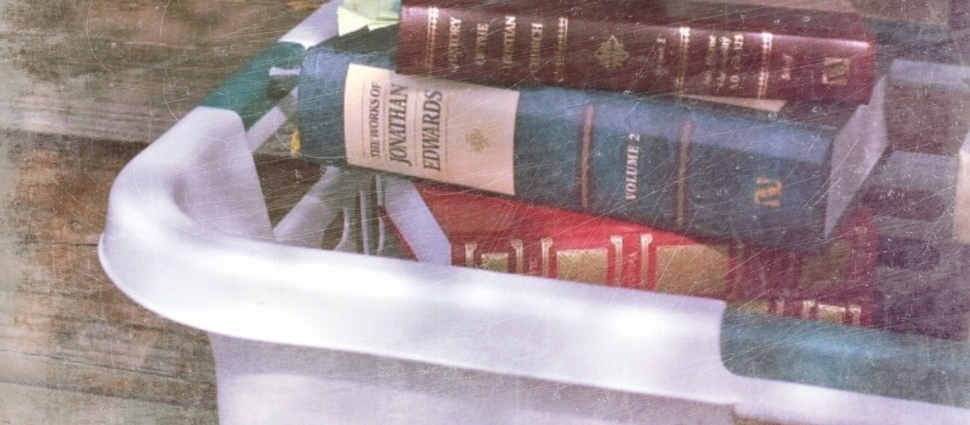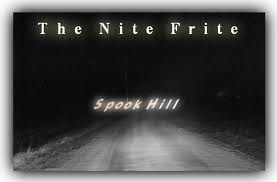A New Set of Eyes

October 29, 2011
 I mentioned in my article, The Empty House, that my mom lives very close to Burkittsvile, MD. Even though you can pass through that tiny town in the time it takes to blink an eye, Burkittsville is full of fun stuff—especially for entertaining bored teenagers. One place we would head up to for a thrill is Spook Hill. Burkittsville is a historic town where an important battle was fought in the Civil War. Spook Hill has become sort of a local legend for creeping people out. What you do is drive to the base of the hill, turn your car off, and put it in neutral. Sounds pretty innocent, right? Well, that’s when things start to get spooky. If you follow these directions, your car will begin to drift UPHILL! As the legend goes, it is the phantom Confederate soldiers pushing your car up the hill. Why would they do that?
Well, apparently these ghosts are a bit confused. They think they are pushing their canons up the hill to ambush the Union forces the night before an anticipated battle. Only this hill separated the two armies that were going to have it out the next morning. The Confederates were planning a sneak attack that night to gain a strategic advantage for battle. But the Union soldiers outsmarted them when they heard all that racket in the middle of the night. They quietly took their positions, leaving their heavy artillery behind. As the Confederate soldiers struggled to push their heavy cannons up the hill, the Union forces gave them an ambush of their own. Thousands of Confederate soldiers were slaughtered as they abandoned their heavy cannons and retreated.
And now we have Spook Hill. It’s a funky experience for sure. And, of course, many a teenage boy has put it to the “real” test by urinating on the hill. I guess pee that flows uphill debunks the phantom soldier explanation. We went there as often as we did because it really does seem like we are drifting uphill. But things aren’t always as they seem. Spook Hill is really an optical illusion. The landscape is set just right to provide for the perfect spooky experience.
I bet you’re thinking the same thing my husband was when I told him that I was going to do an article on this: What does Spook Hill have to do with a Christian blog? A major lesson in the Christian life is that things are not always as they seem. The book of Revelation teaches this theme well.
Dennis Johnson has a wonderful commentary on Revelation called Triumph of the Lamb. His introduction is important to understand the reading of the whole book. He titles it, A Strategy for Seeing. Here is an excerpt:
Revelation is a book of symbols in motion. What John has seen in prophetic vision is the true character of events, individuals, forces, and trends, the appearance of which is quite different on the physical, sociocultural, observable plane. One of the key themes of the book is that things are not what they seem. The church in Smyrna appears poor but is rich, and it is opposed by those who claim to be Jews but are Satan’s synagogue (Rev. 2:9). Sardis has a reputation for life but is dead (3:1). Laodicea thinks itself rich and self-sufficient, but this church is destitute and naked (3:17). The beast seems invincible, able to conquer the saints by slaying them (11:7; 13:7); their faithfulness even to death, however, proves to be their victory over the dragon that empowered the beast (12:11). What appear to the naked eye, on the plane of human history, to be weak, helpless, hunted, poor, defeated congregations of Jesus’ faithful servants prove to be the true overcomers who participate in the triumph of the Lion who conquered as a slain Lamb. What appear to be the invincible forces controlling history—the military-political-religious-economic complex that is Rome and its less lustrous successors—is a system sown with the seeds of its self destruction, already feeling the first lashes of the wrath of the Lamb. On the plane of visible history things are not what they appear, so Revelation’s symbols make things appear as they are. Its surprising, paradoxical imagery discloses the true identity of the church, its enemies, and its Champion. Paradox is central to symbolism. Not only are things not what they appear to be in history, but also typically their true identities as portrayed in visions are the opposite of their appearance in the world (9).
First of all, this is a great commentary for anyone interested in studying the book of Revelation. Secondly, I have been soberly encouraged by its teachings. By this I mean it is encouraging to see how Christ is working powerfully and mysteriously through history. I am confident that the victory is His. When things seem hopeless, I know that Christ is providentially working through even these times. They are not what they seem. Yet, it is also sobering in that I need to be watchful. Am I getting caught up in the illusion? Who am I following? Who am I trusting in? My own moral efforts? The next great politician who will fix everything? My denomination? Or the One whom belongs all glory, honor and praise? Soli Deo Gloria!
P.S. If you want to see a video of the infamous Spook Hill, Here's the link: Spook Hill!
I mentioned in my article, The Empty House, that my mom lives very close to Burkittsvile, MD. Even though you can pass through that tiny town in the time it takes to blink an eye, Burkittsville is full of fun stuff—especially for entertaining bored teenagers. One place we would head up to for a thrill is Spook Hill. Burkittsville is a historic town where an important battle was fought in the Civil War. Spook Hill has become sort of a local legend for creeping people out. What you do is drive to the base of the hill, turn your car off, and put it in neutral. Sounds pretty innocent, right? Well, that’s when things start to get spooky. If you follow these directions, your car will begin to drift UPHILL! As the legend goes, it is the phantom Confederate soldiers pushing your car up the hill. Why would they do that?
Well, apparently these ghosts are a bit confused. They think they are pushing their canons up the hill to ambush the Union forces the night before an anticipated battle. Only this hill separated the two armies that were going to have it out the next morning. The Confederates were planning a sneak attack that night to gain a strategic advantage for battle. But the Union soldiers outsmarted them when they heard all that racket in the middle of the night. They quietly took their positions, leaving their heavy artillery behind. As the Confederate soldiers struggled to push their heavy cannons up the hill, the Union forces gave them an ambush of their own. Thousands of Confederate soldiers were slaughtered as they abandoned their heavy cannons and retreated.
And now we have Spook Hill. It’s a funky experience for sure. And, of course, many a teenage boy has put it to the “real” test by urinating on the hill. I guess pee that flows uphill debunks the phantom soldier explanation. We went there as often as we did because it really does seem like we are drifting uphill. But things aren’t always as they seem. Spook Hill is really an optical illusion. The landscape is set just right to provide for the perfect spooky experience.
I bet you’re thinking the same thing my husband was when I told him that I was going to do an article on this: What does Spook Hill have to do with a Christian blog? A major lesson in the Christian life is that things are not always as they seem. The book of Revelation teaches this theme well.
Dennis Johnson has a wonderful commentary on Revelation called Triumph of the Lamb. His introduction is important to understand the reading of the whole book. He titles it, A Strategy for Seeing. Here is an excerpt:
Revelation is a book of symbols in motion. What John has seen in prophetic vision is the true character of events, individuals, forces, and trends, the appearance of which is quite different on the physical, sociocultural, observable plane. One of the key themes of the book is that things are not what they seem. The church in Smyrna appears poor but is rich, and it is opposed by those who claim to be Jews but are Satan’s synagogue (Rev. 2:9). Sardis has a reputation for life but is dead (3:1). Laodicea thinks itself rich and self-sufficient, but this church is destitute and naked (3:17). The beast seems invincible, able to conquer the saints by slaying them (11:7; 13:7); their faithfulness even to death, however, proves to be their victory over the dragon that empowered the beast (12:11). What appear to the naked eye, on the plane of human history, to be weak, helpless, hunted, poor, defeated congregations of Jesus’ faithful servants prove to be the true overcomers who participate in the triumph of the Lion who conquered as a slain Lamb. What appear to be the invincible forces controlling history—the military-political-religious-economic complex that is Rome and its less lustrous successors—is a system sown with the seeds of its self destruction, already feeling the first lashes of the wrath of the Lamb. On the plane of visible history things are not what they appear, so Revelation’s symbols make things appear as they are. Its surprising, paradoxical imagery discloses the true identity of the church, its enemies, and its Champion. Paradox is central to symbolism. Not only are things not what they appear to be in history, but also typically their true identities as portrayed in visions are the opposite of their appearance in the world (9).
First of all, this is a great commentary for anyone interested in studying the book of Revelation. Secondly, I have been soberly encouraged by its teachings. By this I mean it is encouraging to see how Christ is working powerfully and mysteriously through history. I am confident that the victory is His. When things seem hopeless, I know that Christ is providentially working through even these times. They are not what they seem. Yet, it is also sobering in that I need to be watchful. Am I getting caught up in the illusion? Who am I following? Who am I trusting in? My own moral efforts? The next great politician who will fix everything? My denomination? Or the One whom belongs all glory, honor and praise? Soli Deo Gloria!
P.S. If you want to see a video of the infamous Spook Hill, Here's the link: Spook Hill!



